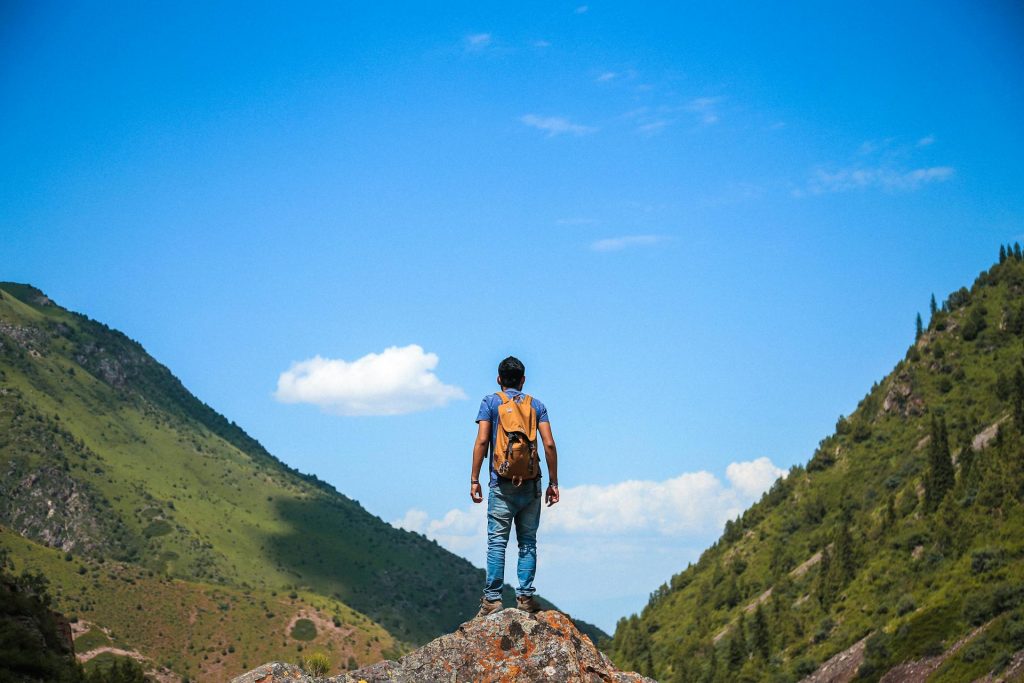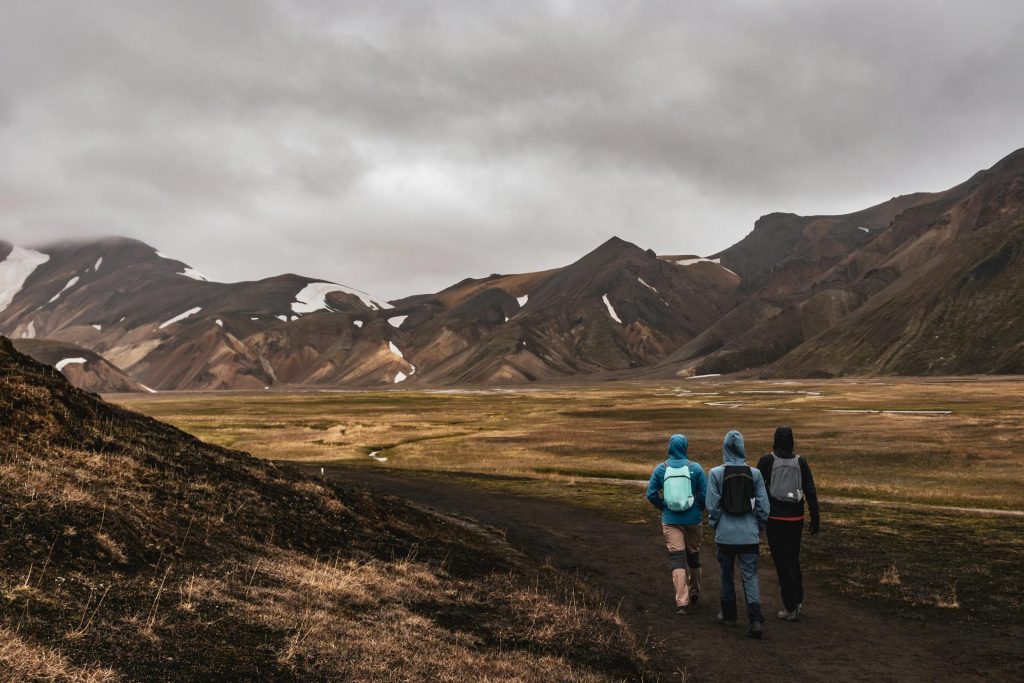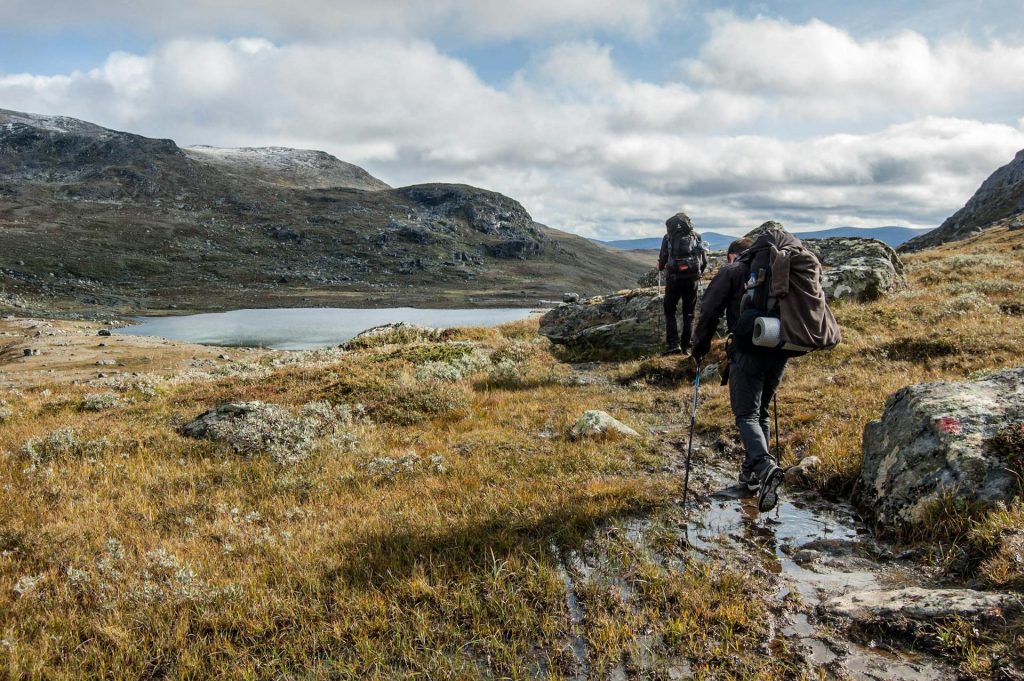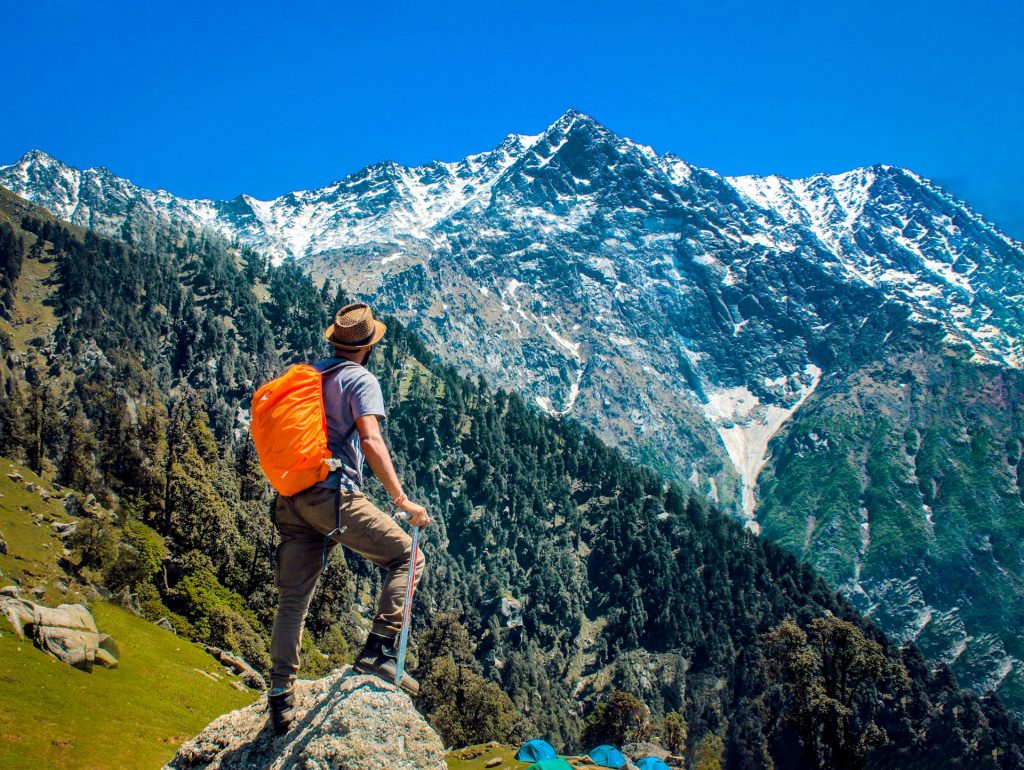Taking a look at the main 7 types of hiking, from trekking and scrambling to backpacking and even urban hiking, here’s an overview of what each activity involves…
Hiking is a versatile and enjoyable outdoor activity that allows individuals to explore nature, challenge their physical abilities, and connect with the environment in various ways.
Depending on the terrain, climate, and personal preferences, hiking can take many forms, each offering unique experiences and challenges.
In this article, we will explore seven distinct types of hiking, each with its own characteristics, requirements, and levels of difficulty.
From the adventurous spirit of trekking to the casual pace of urban hiking, there is something for everyone, no matter your skill level or location.

Top 7 Types of Hiking
1. Trekking
Trekking, often synonymous with long-distance hiking, involves multi-day journeys across diverse terrains.
Unlike regular hiking, trekking typically requires more planning, endurance, and resources, as it often takes place in remote areas far from civilization.
Trekkers carry all necessary gear, including food, water, and shelter, making self-sufficiency a key aspect of this activity.
Trekking is popular in mountainous regions, such as the Himalayas, Andes, and the Alps, where the trails can be challenging and the landscapes breathtaking.

It appeals to experienced hikers who enjoy immersing themselves in nature for extended periods.
While trekking is often associated with adventure, it can also be a sport, with organized treks and challenges that test participants’ endurance and navigation skills.
However, it is also enjoyed recreationally by those seeking a deep connection with nature and the satisfaction of completing a challenging journey.
2. Scrambling
Scrambling is a hybrid between hiking and rock climbing, involving routes that require the use of hands for stability and support.
Unlike traditional hiking, where trails are generally well-defined, scrambling often takes hikers off the beaten path, navigating rocky terrains, steep slopes, and exposed ridges.
This type of hiking is especially popular in areas with rugged landscapes, such as the Scottish Highlands, the Rocky Mountains, and parts of the Alps.
Scrambling is often considered a step up from regular hiking but does not require the technical equipment or skills needed for full-scale rock climbing.
It is suitable for experienced hikers who are comfortable with heights and have good physical fitness.
Scrambling can be both a recreational activity and a competitive sport, with certain routes being famous for their difficulty and the challenges they present.
3. Backpacking
Backpacking is similar to trekking but with a broader scope. It involves carrying all necessary gear on your back and hiking from one location to another, often over several days or even weeks.
The key difference between backpacking and trekking lies in the setting: while trekking is usually confined to specific regions or trails, backpacking can take place anywhere, from wilderness areas to urban environments.

Backpacking allows for a greater degree of freedom and flexibility, as backpackers can choose their own routes, set their own pace, and camp in various locations.
This type of hiking is popular among those who enjoy both the journey and the destination, as it combines the physical challenge of hiking with the independence of carrying everything you need.
Backpacking is suitable for all levels of experience, though longer or more remote trips require more preparation and experience.
4. Section Hiking
Section hiking involves completing a long-distance trail in segments or sections, rather than all at once.
This approach is often taken by hikers who wish to complete iconic trails, such as the Appalachian Trail, Camino de Santiago in Spain or the Pacific Crest Trail, but cannot commit to a thru-hike due to time constraints or other factors.

Each section of the trail is hiked separately, sometimes over the course of months or years, until the entire trail has been completed.
Section hiking allows for a more manageable and flexible approach to long-distance hiking, making it accessible to those with varying levels of experience.
It’s popular among hikers who want to experience the challenges and rewards of long-distance trails but prefer to do so at their own pace.
5. Thru-Hiking
Thru-hiking is the ambitious pursuit of completing an entire long-distance trail in a single, continuous journey.
Unlike section hiking, where the trail is completed in segments, thru-hikers commit to finishing the trail in one go, often covering thousands of miles over several months.
Thru-hiking requires significant planning, physical endurance, and mental resilience. It’s a demanding activity that often involves hiking through various climates, terrains, and weather conditions.

Popular thru-hikes include the Appalachian Trail in the United States, the Camino de Santiago in Spain, and the Te Araroa Trail in New Zealand.
Thru-hiking is typically reserved for experienced hikers who are prepared to face the physical and psychological challenges of such a long and solitary journey.
It is both a personal challenge and a sport, with many hikers attempting to set records for the fastest completion times or to achieve other milestones.
6. Urban Hiking
Urban hiking, also known as city hiking, involves exploring urban environments on foot, often taking in parks, historical sites, and other points of interest.
While it may not provide the same level of immersion in nature as other types of hiking, urban hiking offers its own unique experiences, such as discovering hidden gems in a city or exploring architectural landmarks.
This type of hiking is popular in large cities with well-established pedestrian pathways, such as New York, Paris, and Tokyo.
Urban hiking is accessible to people of all experience levels and is often seen as a leisurely activity rather than a sport.
It’s an excellent option for those who enjoy walking but may not have easy access to wilderness areas.
7. Mountain or Summit Hiking
Mountain or summit hiking focuses on reaching the highest point of a mountain or hill.
This type of hiking often involves steep ascents, rugged terrain, and potentially challenging weather conditions.
The goal is to reach the summit, where hikers are rewarded with panoramic views and a sense of accomplishment.
Summit hiking is popular in mountainous regions worldwide, such as the Rockies, the Alps, and the Andes.
It appeals to experienced hikers who enjoy the challenge of ascending to high altitudes and navigating difficult terrain.

While summit hiking can be done recreationally, it is also a competitive sport, with certain peaks being famous for their difficulty and the number of climbers who attempt to reach the top.
The above list is by no means an exhaustive presentation of all the different types of hiking.
For example, day and nighttime hiking have, by definition, their own categories, as do other location-based hikes such as coastal hiking, waterfall hiking, and desert hiking.
You’ll also find that point-of-interest hiking, winter hiking, and speed hiking—a slightly lesser-paced version of trail running—not to be confused with fastpacking, which is like trail running and backpacking combined, all have their own definitions.
Special Mention – Bushwhacking
Bushwhacking truly takes a special breed of hikers, so we thought it deserved its own special mention.
Bushwhacking involves hiking through dense, unmarked, and often challenging terrain, where there are no established trails.
It requires a high level of navigation skills, physical fitness, and a willingness to face the unknown.

Bushwhacking is popular among adventurous hikers who enjoy the challenge of exploring off-the-beaten-path areas and discovering untouched landscapes.
This type of hiking is not for beginners, as it can be dangerous and requires a good understanding of wilderness survival techniques.
It’s a more extreme form of hiking, appealing to those who seek solitude and the thrill of navigating uncharted territory.
Different Levels of Hiking
In addition to the many different types of hiking, each trail also presents its own difficulty level.
It’s extremely important to know and understand what these levels mean, as trails can easily become dangerous for those with little experience.
Hiking Difficulty Levels
- Easy: These trails are generally flat, well-maintained, and suitable for beginners. They often include clear signage and are accessible to people of all ages and fitness levels. Easy trails are perfect for casual hikers or those looking for a leisurely outdoor activity.
- Moderate: Moderate trails involve some elevation gain and may include uneven terrain or obstacles such as rocks or roots. These trails are suitable for hikers with a moderate level of fitness and some experience in the outdoors. They require more effort than easy trails but are still accessible to most hikers.
- Challenging: Challenging trails involve significant elevation gain, steep inclines, and potentially difficult terrain. These trails are suitable for experienced hikers who are physically fit and comfortable with navigating rugged landscapes. Challenging trails often require more planning, including carrying extra supplies and ensuring proper footwear and gear.
- Difficult: Difficult trails are the most demanding, often involving steep climbs, difficult terrain, and exposure to elements such as wind or extreme temperatures. These trails are suitable only for experienced hikers who are well-prepared and have the necessary skills to navigate tough conditions. Difficult trails may also involve technical challenges, such as rock scrambling or crossing streams.
Once you fully understand the different levels of hiking and how they apply to each trail, you’ll be better equipped to assess the route and make sensible decisions on how best to prepare, what equipment and supplies you should take, and who to notify regarding your whereabouts, as well as an emergency exit plan in case the worst happens.
In Conclusion
When most people think of hiking or trekking, it might not initially be apparent that there are many different types of experiences you can enjoy while taking long walks through the more scenic sections of our beautiful planet.
With a seemingly endless list of locations around the world, each presenting its own unique landscape to explore, you’ll find a whole host of different types of hiking experiences to go along with it.
Whether you’re an expert mountaineer or a novice rambler, you’ll be sure to find a hiking mission that’s right up your street, no matter where you are in the world.



